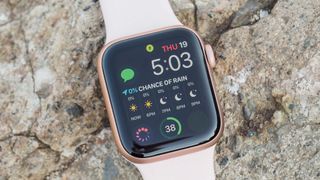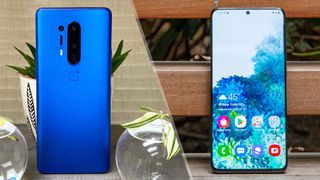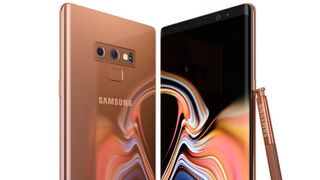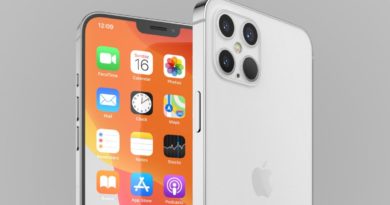This is the Galaxy Note 20’s secret weapon against iPhone 12 — LTPO explained
Smartphone performance, cameras, design and display size have all evolved for the better with each generation. But the one area that still feels a little behind the curve in even the latest and greatest phones is battery life.
How often do you feel the need to charge your phone daily, or find that steady use throughout the day has it gasping for juice come the evening? Chances are your answer is “quite a lot.” However, the adoption of LTPO screen tech could change that, and it’s set to be spearheaded by the Samsung Galaxy Note 20 Ultra.
Promising to reduce battery consumption yet still allow for ultra-high resolution displays with fast 120Hz refresh rates, LTPO looks set to make its way out of the likes of the Apple Watch 5 and into the next-generation smartphones. Samsung is reportedly working on its own take on the tech for its next-generation OLED screens.
With LTPO displays, smartphones could become a lot more efficient and avoid gulping down lots of battery power. So here’s what you need to know about LTPO and how it could help Samsung make one of the best Android phones of the year.
What is LTPO?
LTPO is the snappy acronym that stands for low-temperature Polycrystalline oxide. In short, it allows for a display to dynamically change its refresh rate without needing any additional hardware components to sit between a device’s graphics processing unit and the display controller.
By being able to change the refresh rate of a display on the fly, a device can flip from using power-hungry high refresh rates to lower refresh rates when they aren’t needed, which can help squeeze out more battery life.
Apple developed LTPO technology and uses in the Apple Watch Series 5 to scale a refresh rate from 60Hz down to 1Hz, thereby helping the smartwatch last longer. So adopting such tech for smartphone displays could help reduce their power consumption.

Currently, a lot of OLED displays in phones use low-temperature polycrystalline silicon (LTPS) in the construction of the thin-film-transistors (TFTs) that form the backplane of a display, effectively providing a lot of the electronics components to run a display. Using LTPS allowed for OLEDs display on smartphones to be more power efficient, around 20% to 30%, than IPS LCD displays.
However, LTPS panels don’t allow for dynamic redfish rates, unless extra hardware is used, as is the case with the OnePlus 8 Pro and Oppo Find X2 Pro. Phones like the Galaxy S20 have different refresh rates, but they need to be changed manually.
Even the top-end Galaxy S20 Ultra can’t run a 120Hz refresh rate and the full 1440p resolution that their AMOLED displays can support at the same time; it has to be one or other. That’s because running the Galaxy S20 handsets at 1440p and 120Hz would reduce the phones’ battery life and no doubt erode the overall lifespan of a Lithium-ion battery given it would need charging more often.

Display backpanels that use LTPO, on the other hand, have a combination of LTPS TFTs and transistors made from Indium gallium zinc oxide (IGZO). This results in a display backpanel that uses IGZO TFTs for driving the display while LTPS TFTs take care of the switching circuits. All this leads to a more efficient overall display and one that can dynamically change its refresh rate.
All this sound very promising for future phones, but you may have noticed that the iPhone 11 and iPhone 11 Pro don’t support LTPO displays. Apple doesn’t even have a 120Hz smartphone display yet, though that’s rumored to change with the iPhone 12 Pro Max.
This is because IGZO TFTs are larger than LTPS ones and thus can’t be packed as densely into a display. Given such displays uses a TFT for each pixel, using IGZO transistors would mean compromising on the sharpness of a screen.
But with the Galaxy Note 20 Ultra, according to the rumors we’ve seen so far, it’s set to use an LTPO-based display. That would suggest Samsung has found a way to make use of the tech without compromising on screen sharpness.
HOP: Note-worthy display tech
As Apple owns the patents to LTPO, Samsung is working on its own display tech that apes LTPO but doesn’t force Samsung to cough up patent fees. And the tech in question is HOP.
Standing for Hybrid-oxide and Polycrystalline silicon, HOP effectively combines a take on LTPO tech with oxide TFTs. What oxide the TFTs will use has yet to be revealed, but there’s a chance Samsung could use something different to IGZO. As it stands we know very little about HOP, as the initial news that Samsung is working on HOP tech came from a leak rather than an official announcement.

Avi Greengart, president and lead analyst at Techsponential, certainly sees the potential for the Note 20 to use an LTPO display with HOP tech.
“Apple developed LPTO display technology to help lower power consumption on the Apple Watch by dynamically adjusting refresh rates. It is certainly possible that Samsung Display has similar technology, which should be helpful not only in reducing power consumption on small devices like wearables, but also on smartphones with high refresh rate displays,” Greengart told us.
“Samsung certainly has a strong incentive to find a more power efficient way to drive fast refresh displays; they provide visibly smoother scrolling and animation, but using the 120Hz mode on Samsung’s Galaxy S20 can reduce battery life by up to 30%. I certainly expect the next Galaxy Note to offer a high refresh rate display.”
Samsung has a reputation for pushing display tech, as seen with the Galaxy Fold, the Infinity-O displays first debuted in the Galaxy S10 and even the curved edges of the Galaxy S6 Edge. So there’s an argument that Samsung is certainly poised to introduce something fresh into the world of smartphones displays.
“Samsung has always sought to differentiate its products through innovative screen technologies, be that AMOLED, folding screens and more. A move to LTPO on future products would be a logical step, particularly given the power savings,” Ben Wood, chief of research at CCS Insight, told us.
“The screen is the biggest drain on the battery, so any improvement, however small, adds to the overall performance. Whether it eventually appears in all phones will ultimately come down to cost, performance and how other screen technologies evolve.”
Wood’s last point poses a good question as to whether LTPO and Samsung’s HOP will become commonplace in future smartphones. We can certainly imagine that Apple is potentially looking at ways to boost the efficiency of its Retina Displays, and OnePlus could keep the costs of its handsets down by avoiding relying on extra hardware to facilitate variable refresh rates.
But as Wood noted, it will depend on how successful the first LTPO/HOP display phones are. So the Galaxy Note 20 will be an interesting phone to watch in more ways than one.


